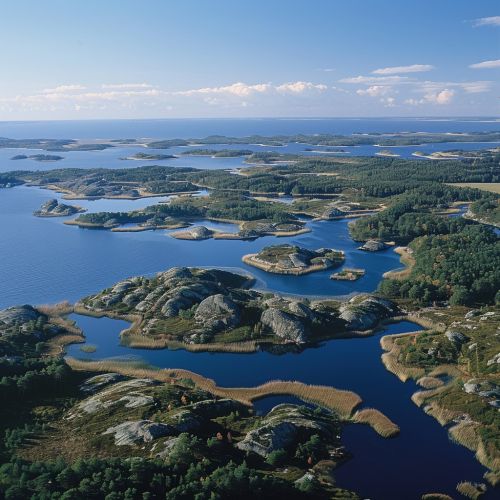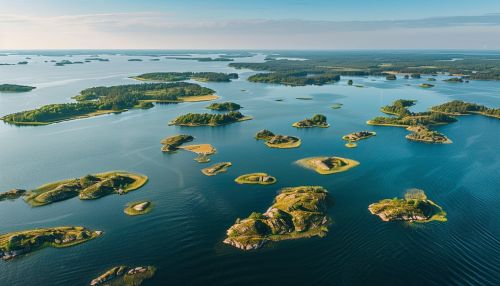Baltic Sea
Geography
The Baltic Sea is a mediterranean sea located in Northern Europe. It is bounded by the Scandinavian Peninsula, the mainland of Europe, and the Danish islands. It drains into the Kattegat by way of the Øresund, the Great Belt, and the Little Belt. The Kattegat continues through Skagerrak into the North Sea and the Atlantic Ocean. The Baltic Sea is connected by artificial waterways to the White Sea via the White Sea Canal, and to the German Bight of the North Sea via the Kiel Canal.


Hydrography and Hydrodynamics
The Baltic Sea is a brackish inland sea, alleged to be the largest body of brackish water in the world. The water of the Baltic Sea has a unique brackish water condition, as it is a mixture of salt water from the North East Atlantic and fresh water from the surrounding land. The Baltic Sea's salinity is much lower than that of the oceans because the Baltic Sea is semi-enclosed and it receives a large amount of fresh water, reducing its salinity.
Climate
The Baltic Sea has a temperate seasonal climate, influenced by the Atlantic Ocean and the Gulf Stream, yet it retains a certain continental character. Winters in the region can be harsh with both sea and land frozen during the coldest months. The summer season, in contrast, is typically mild with temperatures usually in the mid to high 20s Celsius.
Flora and Fauna
The Baltic Sea is home to a variety of marine species, with the composition reflecting the various environmental conditions throughout the sea. The marine life in the Baltic Sea is a mixture of marine and freshwater species. There are a number of fish species present in the Baltic Sea, including cod, herring, and sprat. The sea also supports many species of marine mammals such as seals and porpoises.
Human History
Human habitation of the region surrounding the Baltic Sea goes back to the end of the last glacial period, around 10,000 BC. The Baltic region has a rich history, having been the site of several major naval battles and serving as a vital trade route for centuries. The Hanseatic League, an alliance of trading cities, for a time dominated commercial activity in the Baltic Sea.
Economy
The Baltic Sea region is a significant trade route, connecting major countries and economic centers. Shipping has been the dominant marine activity in the Baltic Sea, with ports around the sea contributing significantly to the economic output of the region. Fishing has also been a major industry in the Baltic Sea, although it has declined in recent years due to overfishing and environmental concerns.
Environmental Concerns
The Baltic Sea is considered one of the most polluted seas in the world. The main environmental concern in the Baltic Sea is eutrophication, the result of an excessive amount of nutrients in the water, causing an excessive growth of algae and other plant life, leading to the disruption of the normal functioning of the ecosystem.
